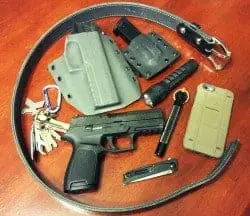
With more and more states (fourteen, per Wikipedia – not counting Puerto Rico) giving the green light to some form of “Constitutional Carry” – that is, carrying a legal concealed firearm without a state-issued permit – citizens have been heading to gun shops and training facilities in droves to enable themselves to exercise their right to defend themselves. Compact, concealable handguns are flying off the shelves, handgun training courses are filling up as people want to refine their skills and learn laws. People putting their freedoms to use is a wonderful thing.
SKIP AHEAD
My Experience with Concealed Carry
However, many of these people are complete newbies to the wide world of concealed carry – some of them have never fired a gun before. It’s an interesting mish-mash of emotions carrying a firearm that nobody else knows you have – elation, invincibility, nobility, trepidation, sometimes outright fear. It’s something you have to experience yourself before you can fully understand. Some of that fear comes from the fact that this new-fangled power is manifesting itself via a whole new experience for a gun owner: What the hell is the best way to do this?
I’ve been carrying concealed handguns for 18 years. I don’t consider myself a newbie at concealed carry anymore, but I certainly haven’t done it all and I don’t consider myself an ”expert”. Rather, I’ve found a couple of methods of carrying that work for me, and I rarely stray from them. But the purpose of this article isn’t to debate gear, technique, or methodology – I’d just like to tell people who are just starting out in concealed carry a few things that I wish I’d known when starting out. There are probably millions of articles out there that will help you find the best carry pistol or holster or ammo; I’d just like to share what I’ve learned from my 18 years of carrying a hidden gun.
Get Insurance!
The most important aspect that I have found while carrying concealed is “protection”. The last thing you want is to use your weapon in a self-defense situation and end-up going through legal battles (including the costs). That’s why I (and the SurvivalCache team) highly recommend obtaining concealed carry insurance. I personally use USCCA because they provide legal help, protection, advice, and much more. Check it out:
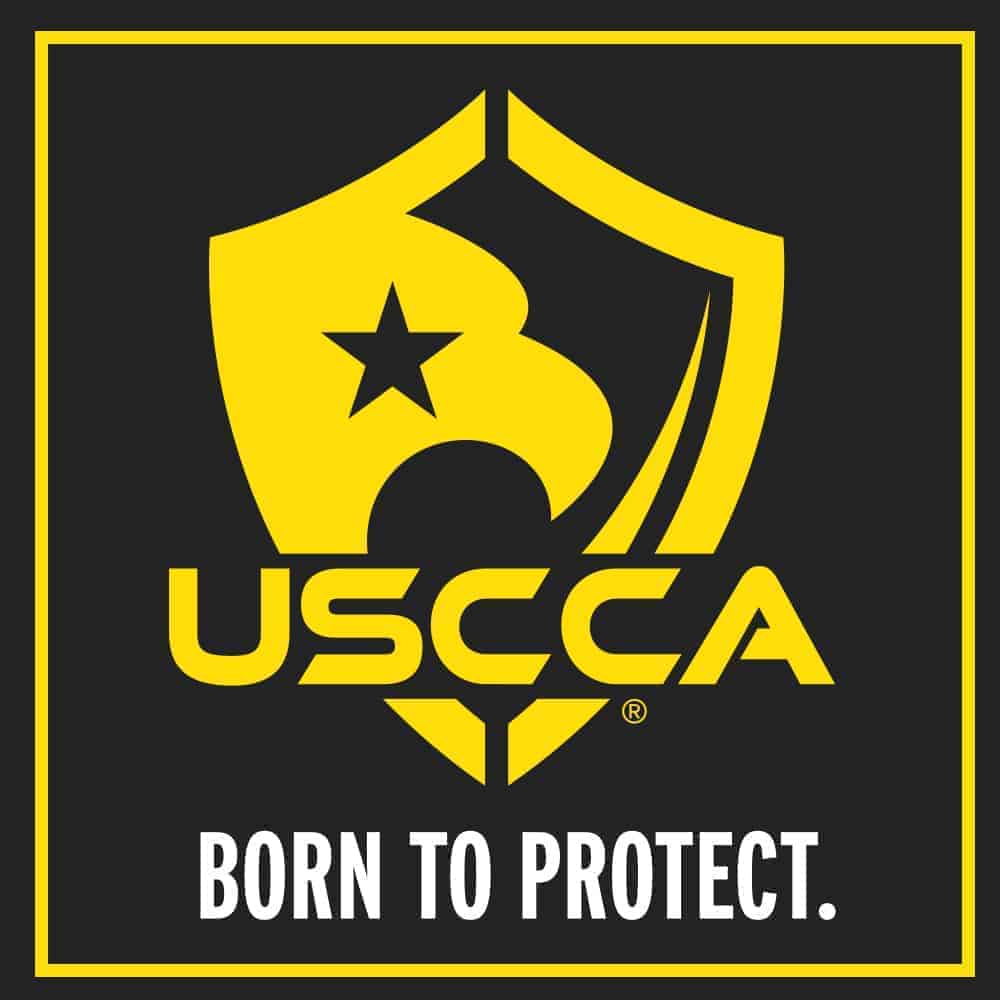 Must-Have
|
|
Learn More |
Let’s get started with what you should know…
What You Should Know Before Carrying Concealed
1. It’s Not Easy & It Sucks
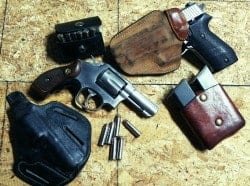
Once you get over the rush and sheer amazement that you’re carrying a concealed handgun, reality sets in. It’s uncomfortable. It’s a hassle. You’re constantly paranoid that your gun is printing and some kid will point at you and scream, “MOMMY! HE HAS A GUN!”. Spare ammo is never easy to carry unless it’s on a belt-mounted pouch that prints worse than the holstered gun. That super expensive hybrid leather/kydex rig that everyone online raved about? It doesn’t fit your body type and pinches and chafes. So does the one you bought to replace it. Handgun grip panels rub, wear through, and catch on clothing, not to mention that custom grip stippling job you HAD to have will treat your love handle like a cheese grater. You bend over and oops, your shirt hikes up and there’s your gun for everyone to see.
Also Read: 8 Tips For Flying with a Firearm
You sit down and the handgun goes “THUNK” against the seat and people look at you funny. Your ankle holster slips and rotates around your leg and allows dirt and crud into your gun. Your guns get rusty from being close to your sweaty body. You have to dress appropriately to cover the gun – no tight fitting T-shirts! You have to stop at the post office? Gotta take the gun off. You go to your favorite burger place and notice that they just posted “no guns allowed”? Gotta walk back to the car and secure the pistol, or find a new place to eat (recommended). Picking your kid up from school? Oops, guns are a huge No-No there, gotta leave the gun at home. If your holster doesn’t clip or snap on, you have to take your belt off, pull the gun off the belt, and run your belt back through the loops. Carrying concealed is a thousand tiny hassles that conglomerate into one big pain in the ass. Luckily, time and experience (and a lot of money) will help you work through the gear and body location issues, making you more comfortable – but it’s something that can only be worked out over an extended period of time carrying. But have no fear: once you have everything worked out, it still sucks. Anyone who says differently is probably lying or selling something.
Also, check out our different picks for concealed carry backpacks and jackets.
2. Stop Fidgeting & Carry On
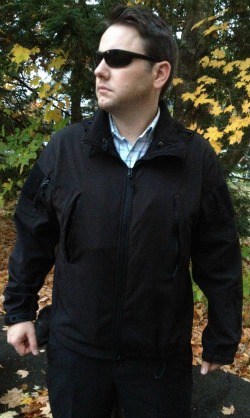
You have a gun on, and like we just discovered in the previous paragraphs, it’s uncomfortable and not in the right spot. (Even just a quarter inch difference in placement can make a huge difference in comfort. No, really.) You keep trying to adjust, or maybe you’re nervous about the gun printing, so you constantly screw with the gun and holster and attempt adjustments while you’re in public.
Here’s a tip from your buddy Drew: KNOCK IT OFF. Run-of-the-mill people aren’t geared to analyze bumps and lumps sticking out of people’s shirts. I’ve walked around wearing full-sized pistols obviously printing under sweatshirts, but nobody stole a second glance. If you’re worried someone will see it, dress differently. If it’s uncomfortable, deal with it, or go into a restroom where you have privacy, and re-adjust your rig until you are comfortable. By fiddling with your gun nobody can see, they’re seeing you act suspicious with something hidden under your shirt – and THAT will raise alarms.
3. Get a Good Holster
When looking for gear, it’s all about what you like. This is a very personal matter; no one holster fits everyone’s body. We don’t need to debate inside the waistband carry vs. outside the waistband, or 4 o’clock carry vs. appendix carry, leather vs. kydex, blah blah blah. The only requirement I personally would recommend is that the holster completely covers the triggerguard, for safety. Go to a good, high-end local shop (avoid the big box stores – chances are excellent anyone there won’t know a good holster from a New Balance sneaker) and ask to try different holsters. Bring your pistol with you, unloaded, in a locked carrying box.
Ask to try the different holsters out with your pistol. Take your time, figure out what you like. Then spend the money and don’t look back. A good holster is worth its weight in gold, and you two will become best friends…so don’t go cheap. Expect to spend $60-100 on a good rig – and don’t buy cheap “universal” holsters, dammit. They’re awful. So are SERPA holsters. There, I said it.
4. Get a Good Belt
In my eyes and experience, a good belt is just as, if not maybe a bit more, important than your holster. You need a dedicated gunbelt. They are thicker, wider, and reinforced to hold the holster and its precious cargo close in to your body and not let it shift around. And when you do draw, the belt ensures the holster stays fixed with your body, and not going for a joyride with the pistol. I used to pay no mind to my belt and just used cheapo Wal-Mart belts – until one day, I was practicing drawing from concealment and the belt actually broke (more like ripped) out of the buckle, and I presented a holstered gun with a trailing broken belt to the target. Oops.
Related: Escape & Evasion Gun Belt Review
The belt is the heart and soul of your concealed carry setup, so get a damned good one. I know I said that I wouldn’t debate gear, but the new Magpul Tejas “El Original gun belt is unbelievably comfortable and rugged – and it’s a classic design; I wear mine every day in a business casual work environment. If you’re looking for a place to start, you can’t get any better than the Magpul offering. A good belt will run you another $60-100 or so.
5. The Gun You Have When You Need It Is The Gun You Have
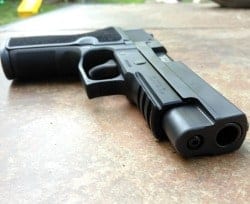
This one probably needs to be explained, but it’s a simple concept: if you KNEW you were going to be in a gunfight today and you couldn’t bring a long gun, what handgun would you want with you? Exactly – the biggest, baddest lead-slinger on the block that you knew you could shoot effectively, had a large magazine capacity in an effective caliber, with excellent sights, probably a weapon-mounted light, and spare mags, right? Right. Well, part of the concealed carrying mindset is that you have to know that there is always a possibility you will get in a gunfight today. To this end, I am positively baffled when people tell me they carry a small .22 derringer or a tiny single-stack .380 as their everyday carry (EDC) gun.
Now, I fully understand the limits and the inherent Catch-22 of concealed carry – the smaller the gun, the easier it is to carry. The easier the gun is to carry, the more likely it is that you’ll have it on your person. The gun you have on your person is the one you’ll be defending your life, liberty, and the pursuit of happiness with. Yes, full-sized guns are a pain to carry and conceal, especially in hot summer months – but newer subcompact variants of full-sized pistols are still effective, and can usually use the magazines, holsters, etc., from their bigger brothers. Just remember that the the threat of multiple badguys who are also armed is always likely, and plan accordingly. It’s only your life we’re talking about here, after all.
6. Carry Spare Ammunition
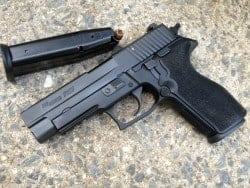
This is another convenience issue: it’s always a pain to carry spare ammo. Belt-mounted mag pouches invariably show through clothing, usually worse than a smallish pistol in a good holster. Having a spare magazine or speedloader in your pocket is annoying too, as they flop and move around and they are never in the orientation you need/want them in. But if you’re ever, God forbid, in a situation where you need to deploy that firearm you carry, I’m guessing you could never have enough ammunition. If your gun runs dry and your opponent(s) is/are still shooting, you’d better hope your life insurance plan is paid up and you told your wife you loved her when you left.
Related: Rothco Concealed Carry Jacket Review
To make things easier, you can carry filler items in your pocket to keep your magazine oriented properly, or try something like the Raven Concealment ModuLoader Pocket Shield, a neat rig you can mount mag pouches to and put the whole works in your pocket. It stops magazine printing and keeps the magazine wight where you need it. Or, you can always run a belt-mounted mag pouch and dress to conceal. Just have spare ammo with you.
Also, know how your ammunition performs. Full metal jacket ammunition will likely over penetrate and can hit bystanders. Carry suitable defense ammunition, and no hand-loaded ammunition. You don’t need that round you carefully crafted for accuracy, power, and reliability to be misconstrued as a “deadly mankiller”.
7. Know When To Hold Them
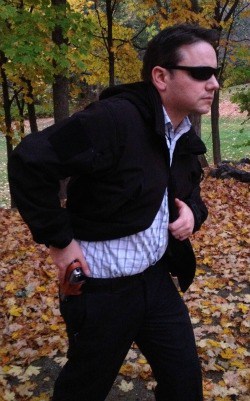
Just because you have the pistol on your person, there is no rule that says you HAVE to use it. The very best way to avoid being shot is to not get into gunfights. Your brain is a much more powerful weapon than any gun you can carry; if you see or are in a situation developing with escalating threat, get the hell out and call the police. There is zero shame in leaving when things get ugly. As a matter of fact, in many locales – including my home state of Maine – you have a duty to deescalate and/or leave if you can, and lethal force is only given the blessing if you did everything you possibly could to disengage a threat and evacuate. If you flipped the bird to the biker gang that cut you off and as a consequence, a fight develops to the point where you had to use a firearm to save your life, you can expect to spend a healthy chunk of that life behind bars. Take a deep breath, walk away. Be smart enough to keep yourself out of situations and places where you are forced to use your firearm. It’s common sense: pride and braggadocio will get you or others killed, while having a head on your shoulders will keep you out of trouble.
8. Carry a Less Than Lethal Deterrent
Not every defense situation calls for the nuclear option. Giving a belligerent drunk or an aggressive dog a heady blast of pepper spray in the kisser and walking away is a lot easier on your lifestyle than trying to explain to the judge why you had to empty the magazine into some family’s pet Labrador that got loose and jumped at you aggressively. Also, if you attempt less-than-lethal deterrents and they don’t stop the threat, requiring you to then have to default to the concealed gun, a jury will definitely see that you tried other options before having to use lethal force as a last resort. If you’re already carrying more gear on your belt than Batman, a Kubaton or OC pepper spray isn’t going to be an issue.
As an added bonus, it is generally not illegal to carry pepper spray or similar non-lethal deterrents in areas where you can’t carry firearms. So if you have to take the pistol off to go into a movie theater that’s posted as “no firearms”, you can still have a measure of protection on your person.
9. Nobody Should Know You have a Firearm Until It’s Time To Start Shooting

I agree with the political fundamentals and theory behind open carrying a gun; that is, having the gun exposed for everyone to see. Many people open carry because they CAN, dammit, and that’s fine with me. However, all I can think of when I see someone open carrying is, “well, there’s the first target”. If nobody knows you have a concealed firearm, you have a definite and absolute tactical advantage you can press if needed. In my opinion, if anyone knows you have a gun, it should only be because you have cleared leather to engage a target, and that trigger is getting pulled because you perceive your life or others’ lives to be in danger from your target. If you’re in a heated argument or other ugly situation, and you think “brandishing” (showing off) the gun will be a deterrent to further crime, well, you just gave up every advantage you had. You’d better re-read that “know when to hold ‘em, know when to fold ‘em” paragraph again.
10. Know The Legal System (and get insurance!)
Unless you just used a firearm in a righteous self defense shooting right in front of four honest cops, a judge, and The Pope and they all collaborate your story, you will likely be treated like a criminal at the outset. Once first responders show up, you will be quickly and probably roughly disarmed and handcuffed. Remember, law enforcement officers don’t know what happened here – they are responding to a person shooting another person. You can help your cause by having the handgun holstered and unloaded (if the threat is perceived to be gone) and your hands in the air when law enforcement shows up; you don’t want responding officers to see you with a gun standing over a body. Saying something along the lines of “I was afraid for my life and I used my firearm in self defense.
I would like my lawyer” and then saying nothing more until a lawyer shows up is probably a good idea (though I’m not a lawyer and I do not profess to be; talk to a lawyer, KNOW YOUR LAWS before you even strap on that holster. They will differ!) You will likely be a mental and physical basketcase, and will need time to sort out in your own head and cope with what happened before you give statements (with a lawyer present). Remember: every American is guaranteed the right of due process before a sentence is handed down – and you just were a judge, jury, and possibly an executioner in one fell swoop. You will likely be arrested, you will likely go to jail, you most certainly will stand trial where you will have to prove your innocence and your story. And if a judge deems your situation a righteous shooting in a criminal trial and dismisses the case, just remember that you will probably have to face a civil trial, especially if your assailant had a family. You have an excellent chance to possibly lose that civil trial.
Yes, you just defended your life or the lives of others, but you still could be found guilty of manslaughter or murder down the road because you had to deny someone their life, limbs, happiness to save your own. This is the way it is; and it’s definitely an unsavory reality of carrying a concealed firearm. Not everything is black and white, cut and dried, Cowboys and Indians. You will be alive, but you may lose everything to save your life.
This is why I carry concealed carry insurance by USCCA as eluded to before. They are there to help me through the process, provide coverage for fees, and provide lawyers that will back me up. It’s a must-have if you want to conceal carry in today’s world!
 Must-Have
|
|
Learn More |
There are many great articles online about what happens after you have to use a firearm in self defense. I would definitely read this article by the US Concealed Carry Association. I would consider these articles to be essential prerequisites to carrying concealed.
Wrapping It Up
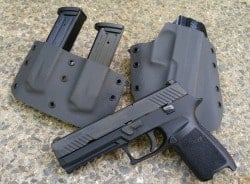
One of the best parts about carrying concealed is that in terms of technique, gear, and mindset, you only improve with experience. You try things that work, ditch things that don’t. It’s a very personal experience, and most of it can only be learned by jumping in with both feet and giving it a go. However, the tips listed above are definitely things that I’ve learned along the way that I wish I’d known when I started carrying a concealed handgun.
So if you’ve been debating carrying a concealed firearm to defend yourself, try it out – just be sure to take training courses – not just in firearms handling and safety, but in law, and we recommend joining the United States Concealed Carry Association (USCCA) for all of that in one place.
[elementor-template id=”18114″]
Know the consequences of using your firearm. Research, research, research, then go wear out holsters and figure out what works best for you. I sincerely hope that none of us ever have to use a firearm in self-defense, but if you do, I hope that your preparation, knowledge, and mindset will keep you from being a victim – before and after drawing that concealed gun. Did I miss anything? Do you have anything to add to the list? Sound off in the comments below!
This article is for informational purposes only. We do not condone violence. Consult local & state laws before you do anything.
All Photos By Drew

